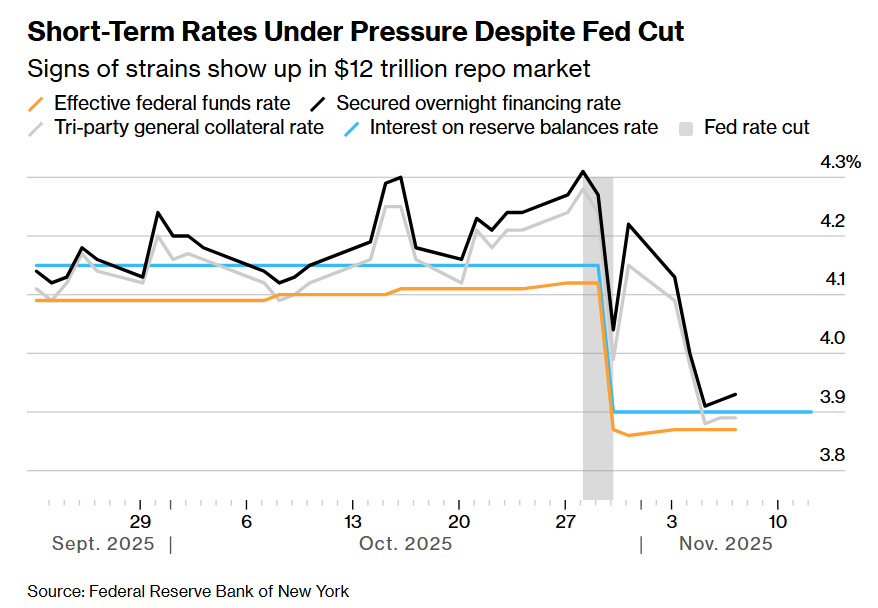Blockchain’s Macroeconomic On-Ramp: How Onchain Data Feeds Are Catalyzing the Next Wave of DeFi Innovation
- Chainlink partners with U.S. Commerce Department to onchain Bureau of Economic Analysis (BEA) data, bridging DeFi with institutional-grade macroeconomic signals like GDP and PCE. - Institutional investors (UBS, Fidelity, JPMorgan) adopt Chainlink’s ISO/SOC 2-certified infrastructure to tokenize assets and automate risk-adjusted lending protocols across Ethereum and Layer-2 networks. - DeFi TVL hits $123.6B in Q2 2025, with Chainlink’s TVS surpassing $89B, driven by real-time data-driven use cases like Aa
The integration of institutional-grade macroeconomic data into blockchain ecosystems is reshaping the DeFi landscape, creating a bridge between traditional finance and decentralized innovation. By anchoring onchain applications to real-world economic signals, platforms like Chainlink are enabling protocols to respond to macroeconomic shifts in real time, unlocking new use cases for institutional investors and developers alike.
Strategic Infrastructure Adoption: A New Paradigm
The U.S. Department of Commerce’s collaboration with Chainlink to bring Bureau of Economic Analysis (BEA) data onchain marks a pivotal shift in financial infrastructure. Key indicators such as Real GDP, the PCE Price Index, and Real Final Sales to Private Domestic Purchasers are now accessible across ten blockchain ecosystems, including Ethereum , Arbitrum, and Optimism [1]. This initiative allows DeFi protocols to automate decisions based on macroeconomic trends—for example, adjusting lending rates in response to GDP fluctuations or creating inflation-linked products tied to PCE data [1]. The onchain availability of these data points is not just a technical advancement but a strategic move to align DeFi with institutional-grade compliance and transparency.
Chainlink’s infrastructure, certified under ISO 27001 and SOC 2 Type 1 standards, ensures that these data feeds meet the rigorous requirements of financial institutions [1]. This has spurred adoption by major players like UBS , Fidelity International, and J.P. Morgan, which are leveraging the platform to tokenize and settle assets across chains [4]. The result is a financial ecosystem where real-time economic data drives capital efficiency and risk management, bridging the gap between decentralized protocols and traditional markets.
Institutional-Grade DeFi: From TVL to TVS
The growth of institutional DeFi is evident in metrics like Total Value Locked (TVL) and Total Value Secured (TVS). As of Q2 2025, DeFi TVL reached $123.6 billion globally, with Ethereum dominating at $78.1 billion (63% of the total) and Layer-2 networks like Arbitrum and Optimism contributing $10.4 billion and $5.6 billion, respectively [1]. Meanwhile, Chainlink’s TVS surpassed $89 billion in Q2 2025, underscoring its role as a critical infrastructure layer for institutional-grade applications [4].
Protocols such as Aave and Lido are already capitalizing on this infrastructure. Aave’s Horizon platform, launched in 2025, enables institutional borrowers to access stablecoins by collateralizing tokenized real-world assets (RWAs), with Chainlink oracles providing real-time asset valuations to ensure adequate collateralization [3]. Similarly, Lido’s staking services leverage Chainlink’s secure data delivery to scale cross-chain operations, demonstrating how institutional-grade DeFi can coexist with liquidity generation [1]. These examples highlight a maturing sector where TVL growth is increasingly driven by utility and capital efficiency rather than speculative activity.
The Road Ahead: Policy, Prediction Markets, and Public Trust
The U.S. government’s adoption of blockchain for macroeconomic data distribution is part of a broader strategy to modernize financial infrastructure. The Deploying American Blockchains Act mandates federal coordination in blockchain deployment, reinforcing trust in public data and positioning the U.S. as a leader in secure, tamper-proof economic reporting [2]. This aligns with initiatives like the U.S. Strategic Crypto Reserve, which integrates cryptocurrencies like Bitcoin and Ethereum into national financial infrastructure [6].
Prediction markets and automated trading strategies are also emerging as key use cases. By integrating real-time GDP and PCE data, DeFi platforms can create markets that price economic outcomes dynamically, offering investors tools to hedge against macroeconomic risks [1]. For instance, a lending protocol could adjust interest rates algorithmically based on quarterly GDP reports, reducing counterparty risk during downturns.
Conclusion: A Foundation for the Future
The convergence of onchain data feeds and institutional-grade DeFi represents a paradigm shift in financial infrastructure. By anchoring decentralized protocols to macroeconomic signals, platforms like Chainlink are enabling a new era of transparency, efficiency, and innovation. As TVL and TVS metrics continue to rise, the sector’s ability to attract institutional capital will depend on its capacity to maintain compliance, scalability, and real-world relevance. For investors, this is not just a technological revolution—it’s a strategic on-ramp to the future of finance.
**Source:[1] U.S. Department of Commerce and Chainlink Bring..., [2] U.S. Government Blockchain Adoption: A Catalyst for..., [3] Aave Expands Into Institutional DeFi With Horizon, [4] Chainlink Quarterly Review: Q2 2025
Disclaimer: The content of this article solely reflects the author's opinion and does not represent the platform in any capacity. This article is not intended to serve as a reference for making investment decisions.
You may also like
The US government restarts, $2.5 trillion in liquidity set to return: The silence in the crypto market is about to be broken


The 12 trillion financing market is in crisis! Institutions urge the Federal Reserve to step up rescue efforts
Wall Street financing costs are rising, highlighting signs of liquidity tightening. Although the Federal Reserve will stop quantitative tightening in December, institutions believe this is not enough and are calling on the Fed to resume bond purchases or increase short-term lending to ease the pressure.

Another Trump 2.0 era tragedy! The largest yen long position in nearly 40 years collapses
As the yen exchange rate hits a nine-month low, investors are pulling back from long positions. With a 300 basis point interest rate differential between the US and Japan, carry trades are dominating the market, putting the yen at further risk of depreciation.